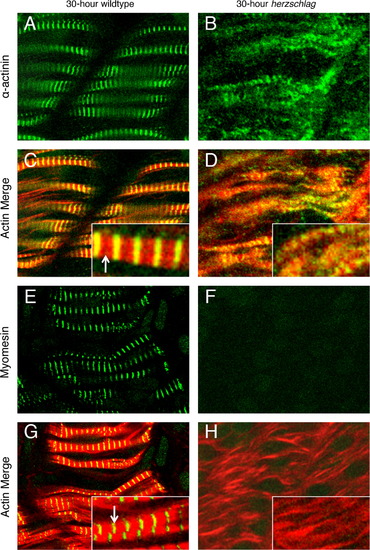
Localization of myomesin but not α-actinin is lost in the titin truncation mutant. Wild-type (left) and herzschlag mutant embryos (right) were examined at 30 hpf to determine the effects of titin truncation on the organization of specific regions of the sarcomere. Integrity of the Z-disk was assessed by immunofluorescent labeling of α-actinin (A and B), while integrity of the M-line was assessed by labeling of myomesin (E and F). All markers can be seen in their normal arrangement in WT embryos when merged with a phalloidin counter-staining to show actin (red), which leaves a narrow gap at the M-line (arrows). Narrow bands of green fluorescence correspond to the Z-disk for α-actinin (C, inset) and the M-line for myomesin (G, inset). In hel embryos (right), expression of α-actinin was detected (B), and sarcomere organization was reduced as in Fig. 5, with α-actinin striations detectable in some myofibers (D, inset). By contrast, myomesin localization was not detectable in hel mutant embryos (F and H). In all experiments, a minimum of 20 embryos were examined to ensure consistency of the phenotype.
|

